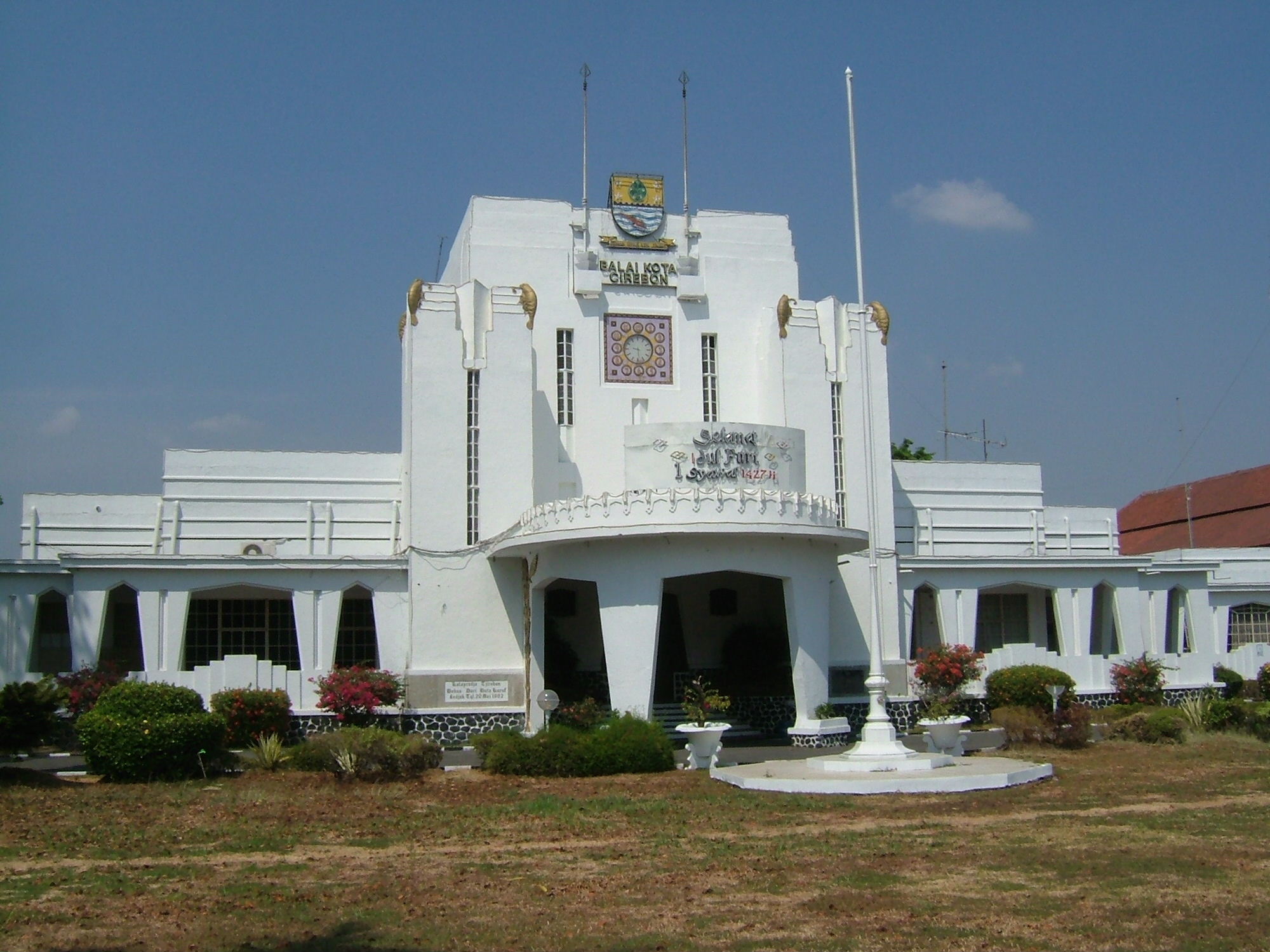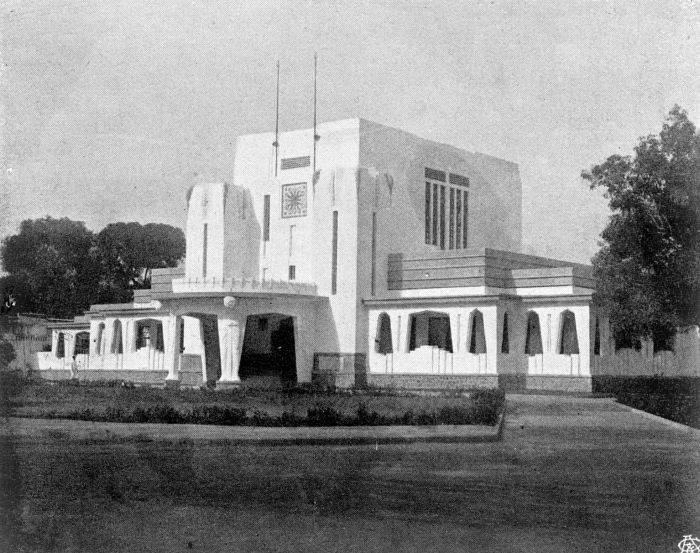Cirebon City Hall on:
[Wikipedia]
[Google]
[Amazon]
 Cirebon City Hall (Indonesian Balai Kota Cirebon) is a city hall in Cirebon City,
Cirebon City Hall (Indonesian Balai Kota Cirebon) is a city hall in Cirebon City,
 Cirebon City Hall is designed by Joost Jacob Jiskoot (1896-1987) in Art Deco with strong influence of
Cirebon City Hall is designed by Joost Jacob Jiskoot (1896-1987) in Art Deco with strong influence of
Indonesia
Indonesia, officially the Republic of Indonesia, is a country in Southeast Asia and Oceania between the Indian and Pacific oceans. It consists of over 17,000 islands, including Sumatra, Java, Sulawesi, and parts of Borneo and New Gui ...
. The building shows implementation of the Dutch Amsterdam School
The Amsterdam School (Dutch: ''Amsterdamse School'') is a style of architecture that arose from 1910 through about 1930 in the Netherlands. The Amsterdam School movement is part of international Expressionist architecture, sometimes linked ...
Style in the colonial Dutch East Indies
The Dutch East Indies, also known as the Netherlands East Indies ( nl, Nederlands(ch)-Indië; ), was a Dutch colony consisting of what is now Indonesia. It was formed from the nationalised trading posts of the Dutch East India Company, whic ...
, now Indonesia.
History
 Cirebon City Hall is designed by Joost Jacob Jiskoot (1896-1987) in Art Deco with strong influence of
Cirebon City Hall is designed by Joost Jacob Jiskoot (1896-1987) in Art Deco with strong influence of Amsterdam School
The Amsterdam School (Dutch: ''Amsterdamse School'') is a style of architecture that arose from 1910 through about 1930 in the Netherlands. The Amsterdam School movement is part of international Expressionist architecture, sometimes linked ...
style. Other source said the architect was H.P. Hamdl and C.F. Koll. The foundation stone was laid on June 26, 1926. The physical construction of the building began on July 1, 1926 and was completed on 1 September 1927. It was used for the town hall of the colonial city of Cheribon (also Cirebon) from 1927. It was also used for meeting place and weddings for the Europeans during colonial period.
During the Japanese Military Administration until the time of independence, the building became the center for Cirebon City Government.
Architecture
The City Hall building has three separate buildings consisting of a main building and companion buildings on the left wing and right wing. At the front of the main building is a semicircular portico. Various stained glass ornaments and lamp decoration showing influence from Nieuwe Kunst andAmsterdam School
The Amsterdam School (Dutch: ''Amsterdamse School'') is a style of architecture that arose from 1910 through about 1930 in the Netherlands. The Amsterdam School movement is part of international Expressionist architecture, sometimes linked ...
. The facade of the building is decorated with prawn sculptures designed by sculptor Anthon Maas, a reference to the city's thriving shrimp industry as well as the nickname of the city 'Kota Udang' ("shrimp city").
The Art Deco building shows strong influence of Amsterdam School
The Amsterdam School (Dutch: ''Amsterdamse School'') is a style of architecture that arose from 1910 through about 1930 in the Netherlands. The Amsterdam School movement is part of international Expressionist architecture, sometimes linked ...
movement, evident in the strong expressionist shapes in the sculptural ornaments and the expressive tapered form in the double facade (double facade is characteristic of the tropical architecture), and use of original material.
Joost Jacob Jiskoot
Jiskoot was the director of Cirebon City's Department of Public Works in 1924. During theJapanese occupation of Indonesia
The Empire of Japan occupied the Dutch East Indies (now Indonesia) during World War II from March 1942 until after the end of the war in September 1945. It was one of the most crucial and important periods in modern Indonesian history.
In ...
, he was the chief for Batavia (Jakarta)-based engineering and construction company ''Associatie Selle & de Bruyn, Reyerse & de Vries''. During this period, he designed the residence of the mayor of Makassar (Ujung Pandang).
In the later period, he was recorded establishing the engineering and construction company ''Associatie NV Djakarta'' in 1949. The company existed until 1957 when all businesses in Indonesia was nationalized.
References
See also
*Indonesian architecture
The architecture of Indonesia reflects the diversity of cultural, historical and geographic influences that have shaped Indonesia as a whole. Invaders, colonizers, missionaries, merchants and traders brought cultural changes that had a profoun ...
*New Indies Style
New Indies Style ( nl, Nieuwe Indische Bouwstijl) is a modern architecture, modern architectural style used in the Dutch East Indies (now Indonesia) between the late 19th century through pre-World War II 20th century. New Indies Style is basically ...
{{coord, 6.707002, S, 108.557767, E, source:idwiki_region:ID, format=dms, display=title
Buildings and structures in Cirebon
City and town halls in Indonesia
Cultural Properties of Indonesia in West Java
Government buildings completed in 1927
1927 establishments in the Dutch East Indies
Dutch colonial architecture in Indonesia
Art Deco architecture in Indonesia